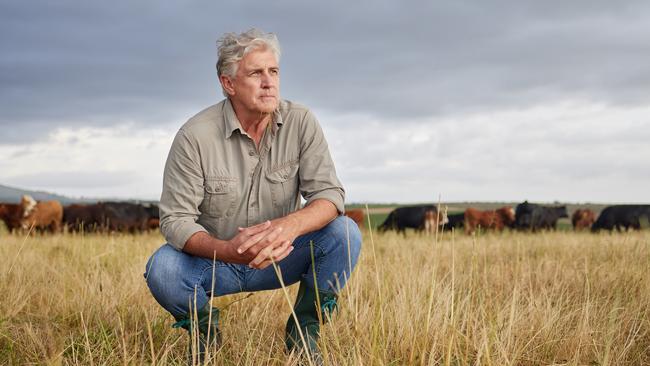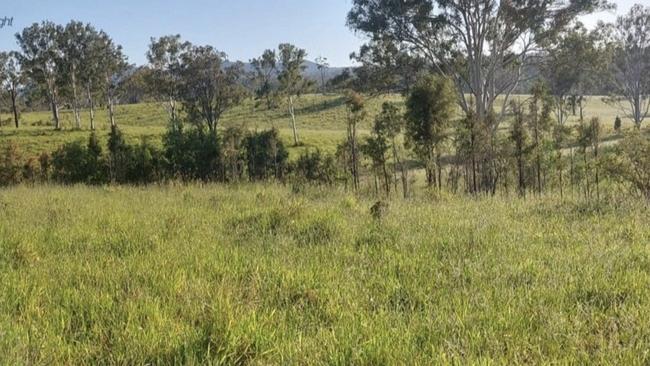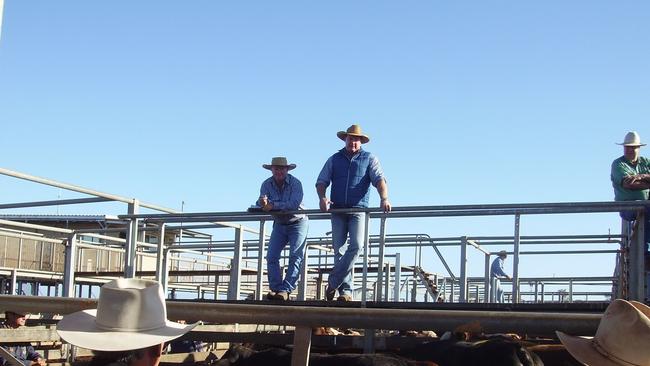The great boomer-led ag-land sell-off and other stories of Australia’s older workforce
It is an issue which will surely impact the value of Australian farmland in the 2030s, if not earlier: the inevitable retirement, or death, of older farmers who refuse to sell.

It is an issue that will most surely impact the value of Australia’s farming land in the 2030s, if not earlier: the imminent and inevitable retirement of (and sometimes the death of) older farmers who over the last decade or so have steadfastly refused to sell up and move into a lovely house in town.
This is of course despite the best efforts of family members who have warned ageing baby boomer farmers of the growing possibility of a serious health incident or worse.
“Dad you’re going to drop dead on this bloody farm. Sell up!” implore the patriarch’s now 40-something sons and daughters.
To which these (some say, stubborn) older farmers are just as likely to laconically respond with something along the lines of: “Well then, so be it”.
The fact some baby boomer (born 1946-1964) farmers are choosing to remain on the family farm into their 70s and 80s is a complex matter.
It is also a matter that will be resolved one way or another in the late-2020s and the early-2030s. Many (but not all) older farmers often cling to the idea one of their children will eventually ‘‘come to their senses’’ and return to the land. So, the grand patriarch landholder hangs on in the hope of passing on the family farm.
There’s also the argument that the idea of older farmers giving up the farm, their very own kingdom, their place of work for 50 years, maybe their home for 80 years, indeed maybe their parent’s home, isn’t a decision which can be made lightly or easily.
Some older farmers may be quite happy with — or at least resigned to — the idea of passing on down at the shed, on the quad bike, or up the paddock.
But, the longer farmers hold out the greater must be the inevitable avalanche of ensuing family-farm sales. What was that famous quote of France’s King Louis XV, resident of the Palace of Versailles? “Après moi, le deluge!” Deluge, avalanche, fire-sale, the effect on agricultural land prices of a surge in family-farm sales is the same.

Golden opportunity
Indeed, it could be that in the late 2020s and early 2030s the Australian model of farming will transition from more than 200 years of family farming (boosted two generations ago by a soldier settlement program), to a new model based on corporatised, mechanised, digitised and drone-ified farming.
And no doubt this new era is likely to also include traditional family farms that, under the guidance of a ‘‘bright young visionary’’, successfully corporatise and expand by snapping up the farmlands of older neighbours.
The trigger to this movement, to this transitioning, is the progressive ageing of baby boomer farmers who are quietly resigned to the idea they will pass away on the farm. And which is likely to lead to a much-celebrated fact noted at their funeral: “He died in the place that he loved most.”
The story of Australia’s farmlands and of the families they have supported, and of the difficult decisions which lie ahead is evident in the demographic profile of farmers and growers.
In one sense, the dilemmas caused by older farmers refusing to leave the land is a dividend of modern life.
Previous generations of farmers died in their 60s. Newly widowed mums moved into town. The farm was either sold or passed on to a son, then in his 30s. Back then, the pathway to regeneration was known, it was understood. This is less so today, especially in farming, but also in other industries.
At the 2021 census, 5 per cent of the Australian workforce was aged 65-plus. This proportion for Australia’s 28,417 beef cattle farmers was 44 per cent. For Australia’s 2451 sugar cane growers this proportion was 37 per cent. Here is a dam wall waiting to burst!
There is no established pathway to retirement for today’s longer-living farmers and growers, especially if the next generation is uninterested in taking up the family business.
At some point in the next decade human frailty will trigger an avalanche of beef cattle grazing farms (Australia’s largest single group of farms) and sugar cane growing properties coming on to the market.
What a golden opportunity for an Australian corporate entity to reshape the domestic farming model to deliver agribusiness product with all the efficiencies scale can add.
And what a damning indictment on entrepreneurial Australia if this golden opportunity is snapped up not by Australians, but by foreign agribusinesses. Or worse, by a range of foreign investment vehicles and entities.
What will be the impact on country towns if local grazing properties are increasingly managed by career-driven farm-managers ‘‘doing a stint’’ on a nearby mega-farm? Will corporate owners have the same commitment to the local community? Will corporate employees play football or netball or contribute to the local CWA street stall?
We know what regional Australia looks like when agriculture is based on the intergenerational family-farm model. The new corporate model of farming ushered in across the 2030s is different; it has the capacity to change the culture and the social structure of everyday life in the regions.

Forever young
But, of course, the core issue which underpins likely tectonic shifts in Australian farming is also present in other industries.
For example, 21 per cent of Australia’s 34,224 bus drivers are aged 65-plus, which I would have thought presents serious OH&S risk, based on the possibility of muscular and skeletal claims associated with a largely older, ‘‘seated’’ workforce.
But, it also shows the emergence of what might be termed ‘‘second careers’’ where workers are sourced (or recruited) from other industries.
Crossing supervisor (6301 jobs), for example, is a job most likely to be taken up later in life. In fact 49 per cent of crossing supervisors are aged 65-plus.
At the other end of the spectrum are jobs skewed towards youth which seem, curiously I would have thought, forever young. Surely some jobs not based on physical performance wouldn’t be excluded from workers based on age.
There are, according to the census, no police officers aged 65-plus in Australia. I suspect this exclusion is solely due to fitness and strength requirements for the job, as well as the timing of access to a pension.
There’s also the option for older police officers to transition into less physically demanding jobs like security officers (42,238 jobs), including building security.
Australia’s seemingly ‘‘forever-young jobs’’ include human resources manager (55,616 jobs) and chief information officer (7316 jobs) where 3 per cent and 1 per cent, respectively, are aged 65-plus.
Perhaps I don’t understand these jobs sufficiently, but they appear to be unusually skewed to youth. Maybe this is an opportunity for the principles of diversity to be more widely applied. After all, an older person’s perspective on the frailties and strengths of human nature may make a worthwhile contribution to managing human resources.
Need for retraining
There are more than 1300 jobs identified by the census. In this column I have showcased six skewed to older workers (farmers, growers, bus drivers and so on) and to younger workers (police officers, human resources managers and chief information officers).
In many ways these jobs showcase the need to retain (and maybe retrain) workers later in life, and for creating opportunities for older workers, including for older HR managers. I also identify police officers as potential candidates for second careers.
Indeed, second careers, opportunities for age-based diversity, an absence of established pathways to retirement, and the emotionally charged world of passing on family (farm) assets are all evident in the series of bar charts tracking work’s later years.
Sometimes the best insights are hidden in plain sight, just waiting for someone to package the data and develop a narrative suggesting how things may play out.
On this occasion a simple bar-chart analysis has exposed looming issues in farming and in rural communities, as well as job opportunities for older workers. Hopefully, these issues and opportunities will be positively resolved by the end of the decade.
Bernard Salt AM is founder and executive director of The Demographics Group; data by data scientist and corporate speaker Hari Hara Priya Kannan







To join the conversation, please log in. Don't have an account? Register
Join the conversation, you are commenting as Logout